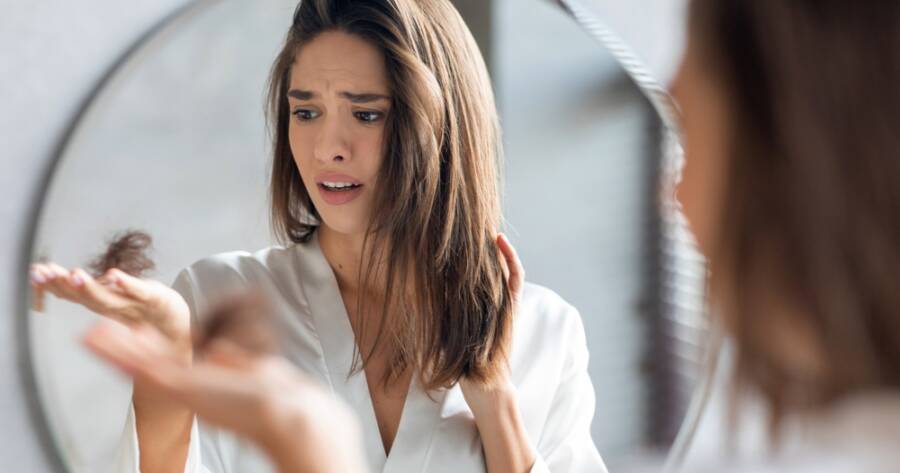Hair loss in women, often a complex and emotional topic, is not as uncommon as many think. Fortunately, there are a number of treatment options available. You can learn everything you need to know about female hair loss.
What Is Female Hair Loss?
Female hair loss, medically known as female pattern hair loss (FPHL), refers to a noticeable reduction in hair density or bald patches that women may experience.1
Unlike male pattern baldness, which usually begins with a receding hairline, female hair loss often starts with thinning hair across the top of the head. It’s a condition that affects a significant portion of the female population, especially after menopause, but it can occur at any age.
Female Hair Loss Causes
The reasons behind hair loss in women are diverse and often multifactorial. Hormonal changes, particularly around menopause, play a significant role. Stress, nutritional deficiencies, certain medications, and underlying health conditions like thyroid disorders can contribute as well.
Genetics can also be a factor, with some women more predisposed to hair loss than others. It’s important to understand that the causes are varied, and pinpointing the exact reason can require professional diagnosis.
How to Prevent Female Hair Loss
While not all causes of female hair loss are preventable, certain lifestyle changes can help manage and reduce the risk. Maintaining a balanced diet rich in essential nutrients, managing stress through techniques like yoga or meditation, and avoiding harsh hair treatments can be beneficial.
If hair loss is due to a medical condition, treating the underlying issue is crucial. Additionally, there are treatments available, such as minoxidil (Rogaine) or hormone therapy, which can be effective for some women.2 It’s important to consult a healthcare provider to determine the most appropriate approach for your situation.
Exploring Treatment Options
There are several treatment options available for female hair loss, each tailored to different causes and stages of hair loss. Topical treatments like minoxidil are widely used and can help stimulate hair growth in many women. Oral medications, such as spironolactone or finasteride, may be prescribed to address hormonal imbalances contributing to hair loss.
In some cases, low-level laser therapy (LLLT) devices can be beneficial by promoting hair growth through light therapy. Hair transplant surgery is also an option for more severe cases. Exploring these options can provide detailed information on their effectiveness, side effects, and suitability for different types of hair loss.
Support and Coping Strategies
Dealing with hair loss can be emotionally challenging, but there are support systems and coping strategies that can help. Joining support groups, either online or in-person, can provide a sense of community and shared experiences. Counseling or therapy can be beneficial for managing the psychological impact of hair loss.
Additionally, exploring cosmetic solutions such as wigs, hairpieces, or hair styling techniques can boost confidence and improve appearance. Forums and resources offer a wealth of information on how to cope with hair loss, from practical tips to emotional support, helping women navigate this difficult journey.
Tackle Female Hair Loss
Understanding female hair loss is the first step towards effective management and treatment. With a wealth of information available, you can come to a better understanding of this condition and the various solutions available.
Remember, each case of hair loss is unique, and what works for one person might not work for another. Empower yourself with knowledge and take the first step in addressing female hair loss.
